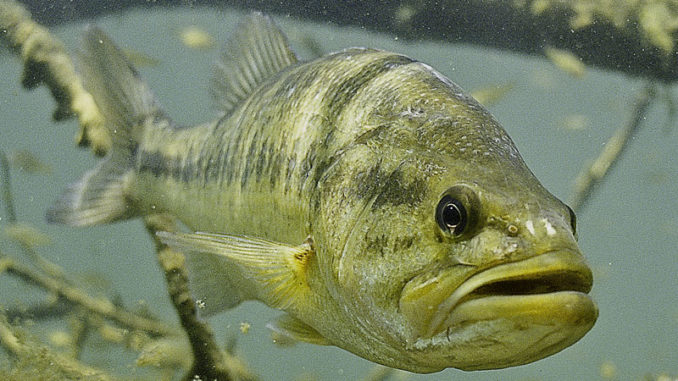
A smaller jig allows you to cast, cover more water, catch more bass
For most of my career as a pro bass fisherman, spring fishing was certainly my favorite. Now that I’ve gotten a little older, I’m enjoying fishing the fall almost as much as I do the spring. I love the cool mornings, pleasant afternoons, the changing colors of the leaves. Anyone who has some time between being in the deer stand should spend a couple of days on the water, because it’s beautiful.
Oh yeah. Forgot. I also catch fish.
Typically, November is something of a transition month in the Carolinas. We can definitely have some mild days in late October. And we’ll have fish going from a late-summer pattern to a fall pattern, all the way to a winter pattern by the end of November. I love topwater fishing starting in September. And that can be in play maybe the first week of the month, but November is time to fish a jig. I will have one tied on wherever I go, any time of year. But in November, I love to fish a jig.
I love to fish a Mop Jig. But in November, I’m going to scale down and go to a Mini Mop Jig, which has a lighter wire hook and fewer strands of rubber. I’ll fish a 1/4- to 3/8-ounce jig, compared to the half-ounce jig I throw in the spring. And instead of browns, I like to throw black/blues in the fall. But it depends on the water clarity.
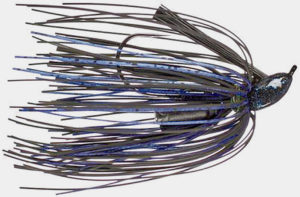
Scaling down
One thing I’ve talked to several guys about is that a lot of them don’t like to fish a jig as big as a 1/2-ounce Mop Jig. If they fish a jig, they want to go smaller. That’s where a Mini Mop Jig fits in. It is perfect to fish in November, when you’re going to be doing more casting than flipping or pitching. You can catch an 11-inch fish on it, or an 11-pound fish.
The biggest thing is figuring out the cover and depth that bass are holding. But once you do, you’ll have a bait that can catch the biggest fish of your life, as well as a lot of quality fish. Where to start depends on the lake you’re fishing. Here on my home lake, Lake Murray, you’ve got wood and rock, docks and floating piers. You go to Santee, and you’ve got every type of wood you can think of: cypress trees, laydowns, everything. There probably isn’t going to be a lot of vegetation, because many of our lakes are starting to be drawn down in the fall. So that shallow grass might be high and dry.
I fish a Mini Mop Jig with a Yamamoto Flappin’ Hog as a trailer. They make two sizes, 4 1/2 and 3 3/4 inches. I fish the smaller one on the Mini Mop Jig. I like to fish the bait on a 6-foot-6 or 7-foot, medium-heavy baitcasting outfit spooled with 14- to 17-pound fluorocarbon.
Casting setup
I do a lot of casting instead of flipping and pitching like I do in heavy cover in the spring. You don’t want to fish that big, 7-foot-6, heavy flipping stick and braided line. The Mini Mop Jig’s hook is designed to be cast and for a hookset 20 to 25 feet from the boat. That big rod and braid, if you set the hook with the Mini Mop Jig, you can flex that lighter hook.
Here’s how I fish a Mini Mop Jig in the fall. Remember, it’s important to try and find the cover the fish are relating to. That’s most of the battle.
Cover the cover
If I’m fishing on Murray, with all the boat docks, I’m going to start with them, and I’m going to fish around the first 2 or 3 feet of water out from the bank and keep that jig on the bottom. I let it get down there and bounce it along the bottom on the shallowest part of that dock. If it’s a floating dock or doesn’t have any pilings on the deep end, I’ll cast shallow and swim it back under the deep end, because you will definitely get some fish suspending under floaters in November.
When I get a bite, I’ll go to the next dock and fish it the exact same way. If you catch two or three fish like that, you can get a pattern going. But before that, you need to do both things: fish the shallow end and swim it under the deep end.
If you’re fishing a blowdown, approach it this way. You’ve got a blowdown that’s fallen off the bank. The trunk might start in one foot of water, but the end of the tree might be in 15 feet of water. So I will fish that tree from shallow to deep. I’ll work it along the bottom around the trunk. And when I get it out toward the end, I’ll swim it through the branches.
Now, in any situation like those, once you figure out where they’re holding, that’s what you fish, because it’s all about being time-efficient on the water. You fish that part of the cover where you’ve found the fish before. And fish only that part of the cover. You might jump from dock to dock or laydown to laydown. If they’re under floaters and you’re swimming the bait to them, then you’ll bounce from dock to dock, hitting only the floaters.
November fishing can really be fun. I like to spend time in a deer stand, too. But I know how enjoyable a day on the water can be when you really get dialed in on the fish.

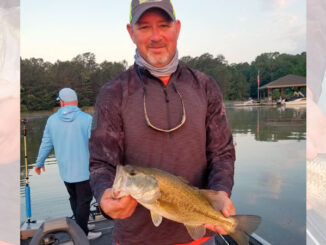
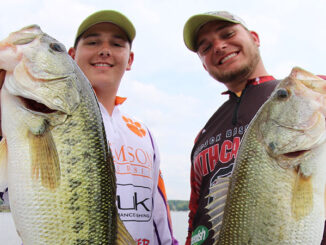
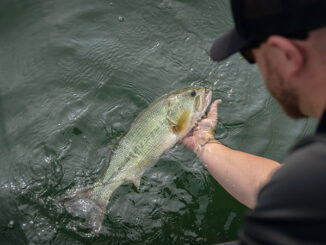

Be the first to comment